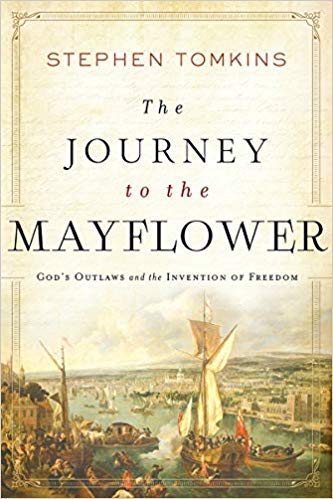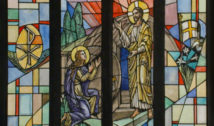
Book Review of “The Journey to the Mayflower: God’s Outlaws and the Invention of Freedom” by Stephen Tomkins
- By Charlotte Odenson --
- 20 Dec 2019 --

Historian Stephen Tomkins, in his meticulously researched book, brings the story to life, including the violence, murders, imprisonment, exile and sacrifices of the English people, influencing and influenced by the Scots, the Dutch, the Germans, and the French, to follow a road that ultimately led to the Mayflower crossing.
It is a story that encompasses four hundred years of religious history and upheaval, plus the book traces the development of a number of Christian sects, including the Church of England, the Presbyterians, the Congregationalists, the Baptists, and, of course, the Puritans. Tomkins gives us a whole new understanding of the differences and similarities of these groups and how each found their way to their own Christian worship.
From the times of the earliest Separatists in the days of Queen Elizabeth I, Tomkins brings us stories of ministers required to use the Church of England prayer Book or face prison. The book is filled with specific accounts such as a minister, as a Separatist, baptizing without using the sign of the cross (something many Separatists believed to be too close to Catholicism) and marrying a couple without the use of a ring and was therefore imprisoned where he eventually died.
As the Separatists themselves split into factions, split by not only theological ideas but by such things as the correct attire for clergymen, the religious upheaval in England was mirrored to some extent in the rest of Europe.
Tomkins recounts the many suppressions and the deprivations undergone in the name of religious freedom, but perhaps the most enlightening aspect of the book is the journey from the societal concept of a State Religion, which was the standard in Europe, through the idea of “separate” Churches, and culminating in the idea of an individual’s right to his/her own religious beliefs.
Tomkins points out that the new idea in the late 1500’s was of a Church that is a community of people who decide to be that Church, as opposed to the historical tradition of a Church which is an entire Christian state in England, as well as most of Europe. Tomkins tells us of the constantly changing tides of religious tolerance and intolerance, battering these Christians in all their different sects and especially the exile of many.
In the US we were taught the simplicity that the Pilgrims came to the New World for religious freedom, but the true story is much more complicated, as Tomkins makes clear. By the time the Mayflower sailed, the passengers were made up of people with many different religious views, economic means, social standing, and the years after landing did not treat them kindly.
However, the legacy remains and Tomkins’ book brings a new understanding to the 400 years of religious change and the necessity for individual religious freedom and tolerance that is still with us today.
On sale January 7, 2020. Pre-order on Amazon.



















